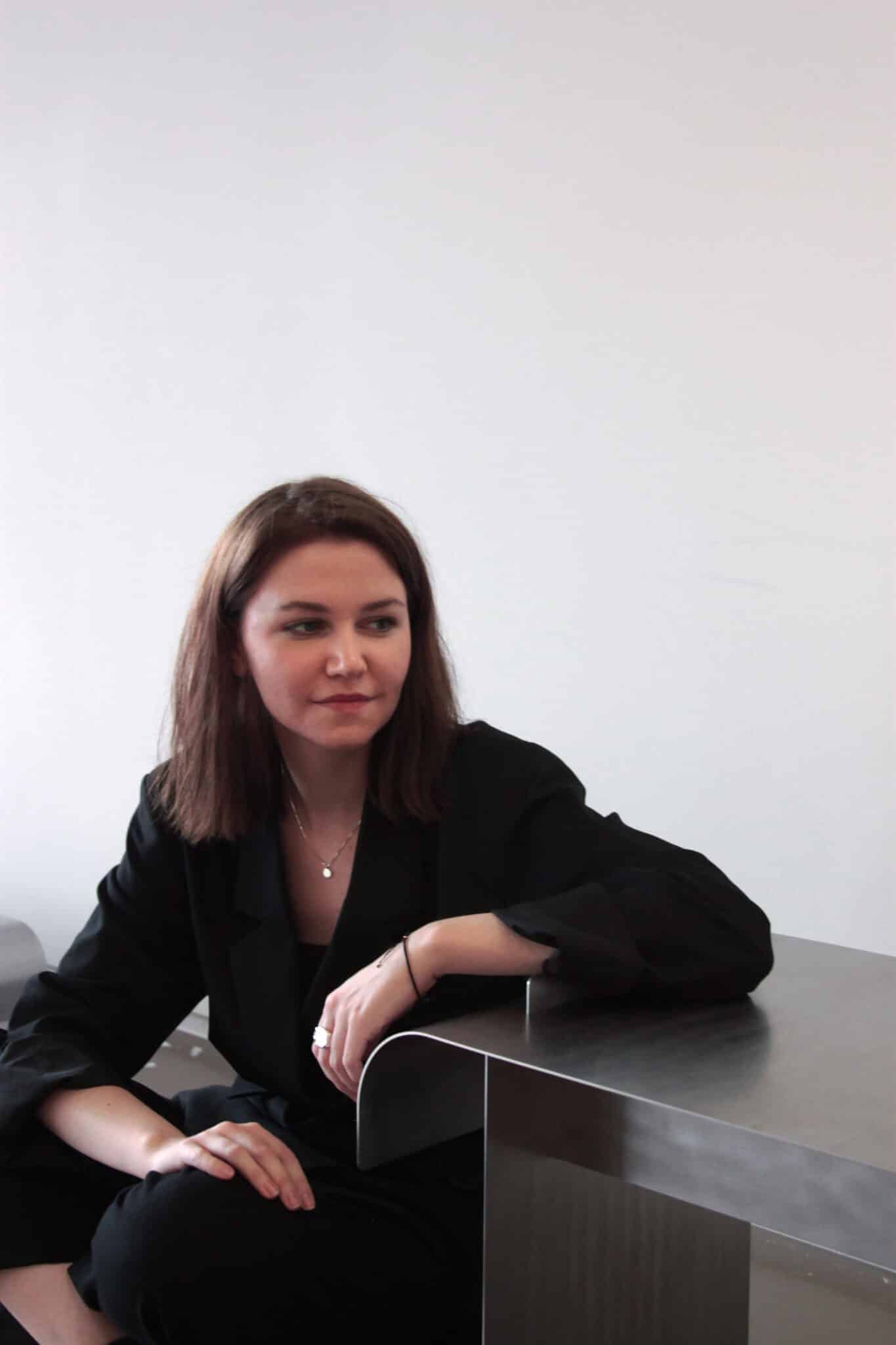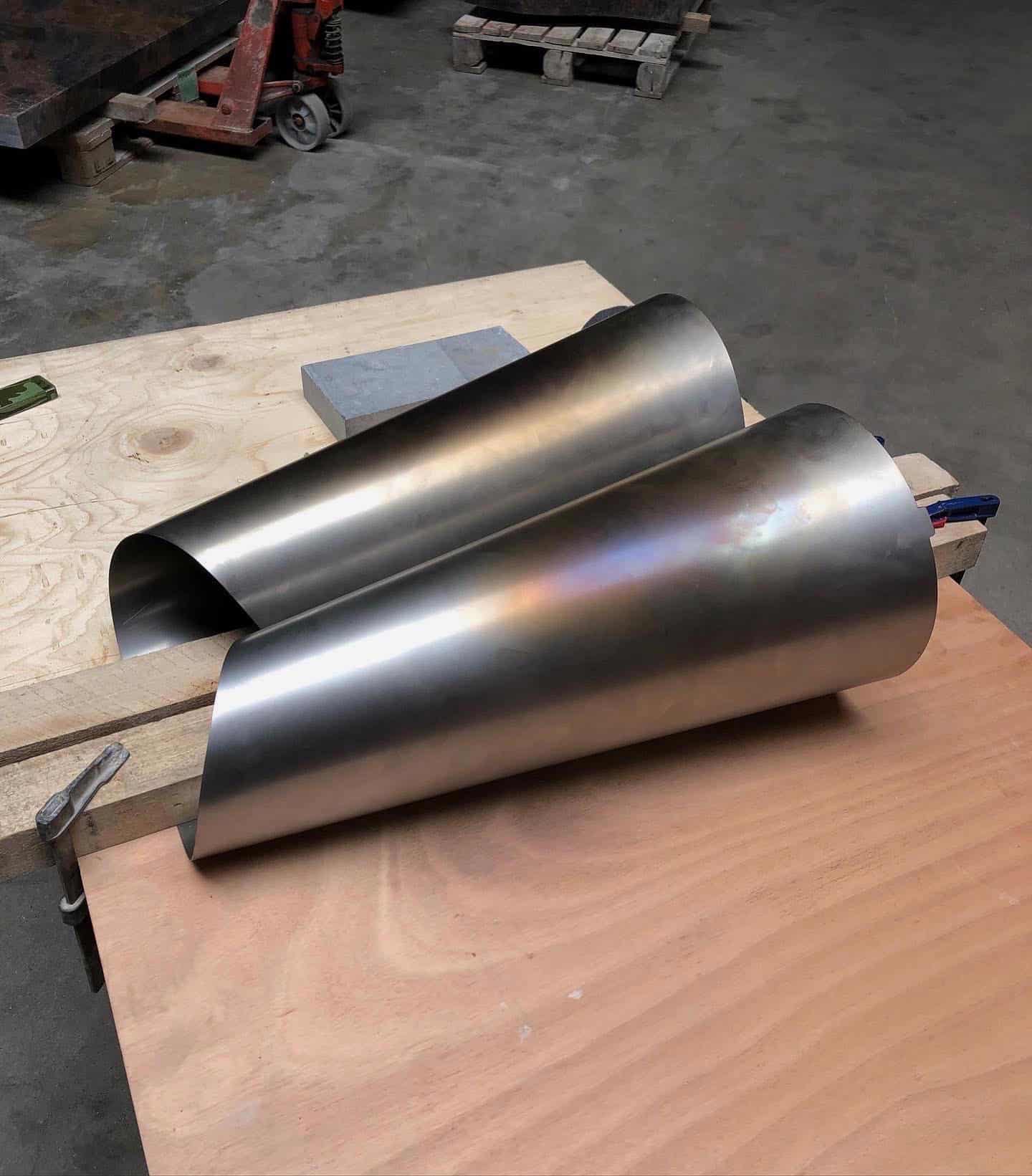
MARIA TYAKINA
1. Where were you born and where are you from ?
I was born in a small town in the central part of Russia. 10 years ago I moved to The Hague, The Netherlands where I now live and work
2. What is your first memory connected to the art world ?
I grew up in a remote area, where art was a rarity. So my first experience with art would come from books and film. The first museum I visited was of a local artist who worked with stone and wood. He worked the big pieces of wood and stone into bodily images. It was a beautiful union of nature and human labor.
3. Have you always worked in the art/design field ?
I was lucky to set early on pursuing design, however, it did take me years before I could earn from design. I started my education in Interior Architecture at the age of 17 and later in the study, I chose to transition into furniture and object design. I realized that it was the building and the time that I spend making is what me satisfaction and meaning.
4. What led you to the design creation ?
Ever since childhood I was fascinated with objects and seeing how others live.
I find great interest in how things are made, the stories they convey, and the interweaving that exists between identity and objects we own. I find that objects help me to make sense of the physical world and to create the stories around experiences and project them through the material.
5. How would you describe your creative process and it influences ?
It is hard to verbalize the thinking process, but when I have an idea I need to start doing it immediately. The practical part of my work includes experiments with materials, construction, form, and techniques. I would say that my process is very visual. I usually make models, material tests, and collages to help start the project. My process includes physically building things as well as working in a digital environment with a help of 3d modeling and printing.
6. Could you describe a typical day of your work ?
I try to choreograph the timing of the studio work in a way that I can do multiple tasks at once. It is the happiest days when I feel that have been juggled well, however, I find time spend in a studio not working is also very beneficial: to reflect, to find inspiration, to try things that are not a priority.
7. Why did you choose the specific materials you work with ?
I like to work with materials that have their own specific character and the way it wants to behave. There is always an element of unexpected when working with wood, metal, or ceramics. Those materials teach you a lot about acceptance. At the same time, I find this uncontrollable aspect is what adds movement and life to the form. I usually choose materials that can have longevity and can age beautifully.


8. What are the technical particularities of your creations ?
When making things, I am trying to balance rational and intuitive. It is the rational side that strikes for efficiency when it comes to producing pieces and choosing the techniques and material and the intuitive/emotional side comes into play when it is about the expression of the piece. Both I find to play an important role in creating a meaningful experience between people and objects.
9. What advices could you give to beginning artists who would like to create sculptural design works ?
Advice is tricky. Maybe don’t get affected by what anyone says it could be a wrong person at the wrong time. Be selective of who you accept your advice from.
10. If your works had to belong to a design movement, in which one would you define it ?
I like exploring my personal notions so it would be difficult for me to subscribe my work to a particular movement. I can only view it gradually when it is being made. It might look different for the people viewing the work from the outside perspective.
11. What designers have influenced you ?
I like exploring my personal notions so it would be difficult for me to subscribe my work to a particular movement. I can only view it gradually when it is being made. It might look different for the people viewing the work from the outside perspective.
12. What contemporary designers do you appreciate ?
Martin Szekely, Lin Cheung, Franchesca Torzo
13. What contemporary artists (in any kind of art) have you been inspired by ?
Richard Serra, Maria van Kesteren, Kishio Suga, Yves de La Tour d’Auvergne
14. If you had to summarize your creations in one word or sentence, what would it be ?
Dear things
Proust Questionnaire with very short answers (one or a few words) :
(The Proust Questionnaire is a set of questions answered by the French writer Marcel Proust. Other historical figures who have answered confession albums are Oscar Wilde, Karl Marx, Arthur Conan Doyle, Stéphane Mallarmé, Paul Cézanne…)
1. What is your idea of perfect happiness?
Moments, when you can enjoy the luxury of time, also happiness for me, is in the making
2. What is your greatest fear?
Losing memory
3. What is the trait you most deplore in yourself?
I try not to deplore, but there are always things to improve. I would, for example, want to worry less about things that are outside of my control or try to put less judgment on myself
4. What is the trait you most deplore in others?
Snobbery
5. Which living person do you most admire?
My grandmother, who is a person of great courage and an independent thinker
6. What is your greatest extravagance?
Stationary
7. What is your current state of mind?
Finding special moments in the mundane activities
8. What do you consider the most overrated virtue?
Hardworking
9. What is the quality you most like in a man ?
Same qualities I value in a person: curiosity, humbleness, open-mindedness, sensitivity, courage
10. What is the quality you most like in a woman ?
Same qualities I value in a person: curiosity, humbleness, open-mindedness, sensitivity, courage
11. Which words or phrases do you most overuse?
I feel I say the word “things” too much, for the lack of a better word
12. Which talent would you most like to have?
Writing. I envy people who can create worlds out of words, gifted storytellers
13. If you could change one thing about yourself, what would it be?
If it needs to be one thing, probably allow myself to make more mistakes
14. What do you consider your greatest achievement?
My friends and sometimes my work.
15. If you were to die and come back as a person or a thing, what would it be?
Maybe a tree, seeing this world change for hundreds of years
16. Where would you most like to live?
Somewhere in a remote area, in nature, having a quiet life. I couldn’t wait to move to the city when I was younger, now I cannot wait to move back to nature.
17. What is your most treasured possession?
Probably it is things that I find, natural objects like a unique branch or a stone. I admire and respect things but I don’t feel a strong need to possess them, when it is time to part ways we must be able to let things move forward.
18. What do you regard as the lowest depth of misery?
A feeling of not belonging
19. What is your favorite occupation?
Being in the studio, making things, learning
20. What is your most marked characteristic?
Knowing a lot of facts about random subjects
21. What do you most value in your friends?
Their depth and drive to explore and improve, their passions and generosity
22. Who are your favorite writers?
Jevgeni Zamjatin, Kurt Vonnegut, Margaret Atwood, Fans Kafka
23. Who is your hero of fiction?
It is hard to choose just a few, first, that came to mind are Jack Londons Martin Eden, and Winston Smith of 1984 by George Orwell
24. Which historical figure do you most identify with?
Nobody, I can learn from people but it would unnatural for me to identify with somebody else
25. Who are your heroes in real life?
People who fight injustice. I do wish there would be less need for heroes in this world.
26. What are your favorite names?
Never thought of it
27. What is it that you most dislike?
Waiting and uncertainty
28. What is your greatest regret?
Shielding myself from experiences
29. How would you like to die?
I wouldn’t like to choose it
30. What is your motto?
“Be prepared to appreciate what you meet.”- F. Herbert
